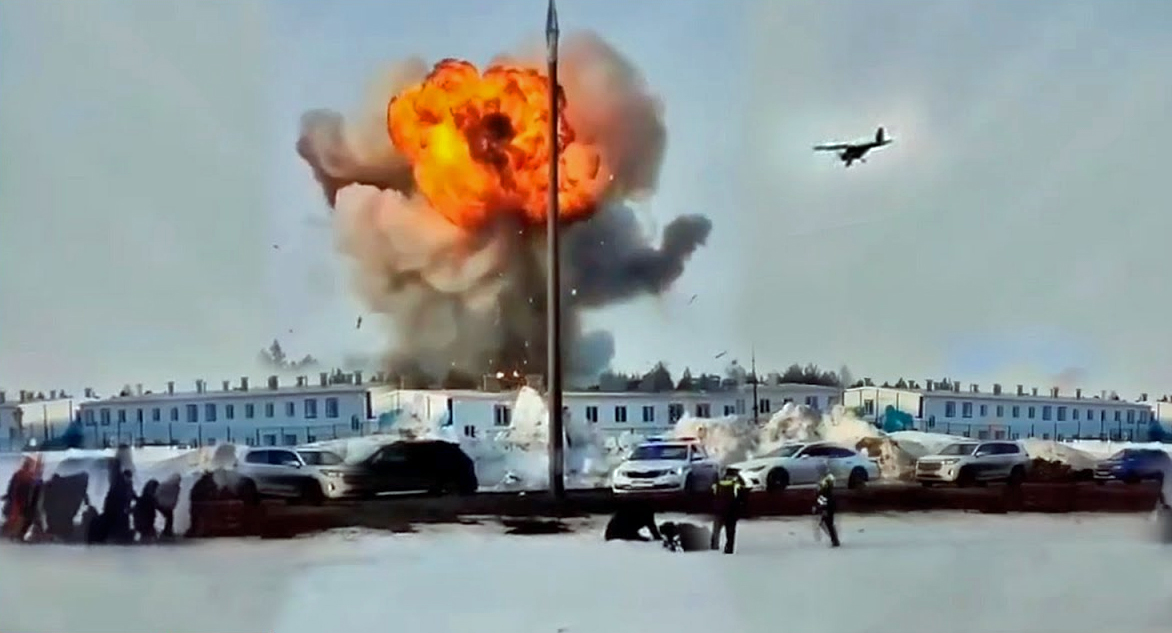HIGHLIGHTS
The impact on civilians of daily attacks in Kharkiv City and other towns and villages of Kharkivska Oblast increased over the last three days, with scores of civilian casualties and damage to houses and civilian infrastructure reported by the authorities.
JOIN US ON TELEGRAM
Follow our coverage of the war on the @Kyivpost_official.
The number of displaced civilians continued to increase due to ongoing hostilities in the front-line and border parts of Kharkivska Oblast, with over 16,000 people estimated to have fled the six most affected hromadas (communities) since 10 May
Between 10 and 18 May, more than 8,100 people received immediate assistance at the transit centre for displaced people in Kharkiv City, including food, hygiene supplies, clothes, household items and medical care.
HUMANITARIAN SITUATION
The number of displaced civilians continued to increase due to ongoing hostilities in the front-line and border parts of Kharkivska Oblast, while the civilian toll of daily attacks in Kharkiv City and other towns and villages grew over the last three days.
The past three days have seen daily attacks in Kharkiv City, with scores of civilian casualties – including children and a pregnant woman, according to local authorities on 19 May. The authorities also reported multiple houses and civilian infrastructure damaged due to attacks, as well as an ambulance hit and a paramedic injured when two strikes reportedly impacted the same location in close succession. Civilians were also reportedly injured and killed in other parts of the oblast, according to local authorities.

ISW Russian Offensive Campaign Assessment, December 24, 2024
Between 10 and 17 May, more than 16,100 people – 40 per cent of them 60 years old and older – were forced to leave their homes in the Derhachivska, Lypetska, Starosaltivska, Tsyrkunivska, Vovchanska, and Zolochivska hromadas, with some 16,600 people remaining, according to the IOM assessment.
Oblast authorities estimate that between 10 and 18 May, more than 10,300 people were evacuated from these hromadas through social transport coordinated by humanitarian organizations, volunteers and local authorities, with many more understood to have left by themselves.
Food, hygiene items and livelihood assistance are the priority needs among displaced people, according to the IOM assessment. Humanitarians at the transit centre also indicate a high need for assistive mobility devices and other supplies for older people.
HUMANITARIAN RESPONSE
Humanitarian organizations continued to support the evacuation process for people fleeing active hostilities in the most affected hromadas of Kharkivska Oblast.
Between 10 and 18 May, more than 3,400 people evacuated through social transport were registered and received immediate aid at the transit centre. During the same period, 4,700 people who had left the affected areas by their own means were also provided with immediate support on-site at the centre.
When arriving at the transit centre, people who have been evacuated received food, water, clothes, mattresses, bedding, household items, hygiene and other essential items to support them through the first days to support them through the first days. Over 20,000 liters of drinking water – distributed by People in Need and Myrne Nebo – and more than 7,000 food packages, 7,200 hot meals and 3,200 sandwiches were provided by Myrne Nebo (through WFP), the Ukrainian Red Cross Society, World Central Kitchen and the Heart of Kharkiv – Roxana & the Team.
Some 3,200 people were also registered for multi-purpose cash assistance by the Right to Protection NGO and Myrne Nebo with support from UNHCR and WFP, respectively, ACTED and the Danish Refugee Council.
OCHA is the UN Office for the Coordination of Humanitarian Affairs (OCHA).
NOTE: This OCHA Flash Update is prepared through collected public information and current response data from partners available at the time of publication and could be amended as the situation evolves. See the original here here.
You can also highlight the text and press Ctrl + Enter






